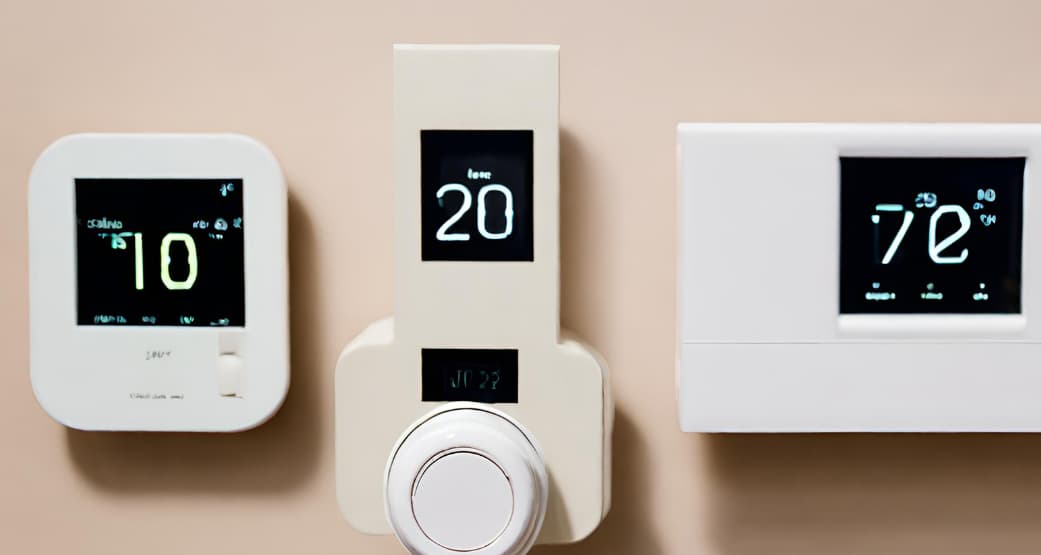In our quest for a comfortable and healthy living environment, we often focus on factors like cleanliness, ventilation, and air quality. However, one often-overlooked aspect that plays a pivotal role in achieving indoor comfort and good air quality is the thermostat. Thermostats, those unassuming devices that control the temperature of our living spaces, are essential not only for maintaining the right climate but also for regulating indoor air quality (IAQ).
Understanding Indoor Air Quality (IAQ)
Before delving into the connection between thermostats and IAQ, it’s crucial to grasp what IAQ entails. Indoor air quality refers to the condition of the air inside a building, which can significantly affect the health, comfort, and well-being of its occupants. Several factors contribute to IAQ, including temperature, humidity levels, ventilation, and the presence of pollutants.
The HVAC System’s Role in IAQ
Heating, ventilation, and air conditioning (HVAC) systems are the backbone of IAQ management in indoor spaces. These systems control temperature, humidity, and air circulation. Here’s where thermostats come into play, as they act as the central controls for HVAC operations.
Temperature and IAQ
Thermostats are primarily known for regulating temperature, and this is a crucial aspect of IAQ. The temperature at which a space is maintained can impact both comfort and IAQ. A well-maintained temperature range ensures that occupants are comfortable and helps prevent issues like mold growth due to excessive humidity or the proliferation of allergens in a too-dry environment.
Humidity Control
One often underestimated aspect of IAQ is humidity. Controlling humidity levels is essential because overly dry air can lead to respiratory discomfort and other health issues, while excessive humidity can foster mold growth and dust mite infestations. Modern Johnson controls thermostats often feature humidity control settings, allowing users to maintain optimal humidity levels.
Ventilation and IAQ
Ventilation is another critical component of IAQ. It involves the exchange of indoor air with fresh outdoor air. Thermostats control HVAC systems’ ventilation rates, ensuring that indoor spaces receive an adequate supply of fresh air. Proper ventilation helps reduce the concentration of indoor air pollutants and keeps the environment feeling fresh.
Air Filtration
Airborne pollutants, including dust, allergens, and microorganisms, can have a detrimental effect on IAQ. HVAC systems incorporate air filters to trap these contaminants and prevent them from circulating throughout the indoor space. Thermostats can be programmed to optimize air filter efficiency, reminding users when it’s time for filter replacement or maintenance.
Thermostat Features for IAQ
Modern thermostats come equipped with features designed to enhance IAQ. These features include:
Fan Control: Thermostats can control the HVAC system’s fan independently. Running the fan continuously can help improve air circulation and filtration, enhancing IAQ.
Air Quality Sensors: Some thermostats are equipped with air quality sensors that detect pollutants like volatile organic compounds (VOCs) and trigger HVAC adjustments accordingly.
Filter Replacement Reminders: Thermostats can remind users when it’s time to replace air filters, ensuring that filtration remains effective.
Thermostat Programming for IAQ
One of the most powerful tools for optimizing IAQ is thermostat programming. Homeowners and building managers can program thermostats to maintain optimal IAQ conditions throughout the day. Here are some tips for thermostat programming to enhance IAQ:
- Set temperature and humidity levels within comfortable and healthy ranges.
- Schedule HVAC operation to align with occupancy patterns.
- Enable fan circulation to keep air moving and filtered.
- Use setback temperatures during periods of low occupancy to save energy while maintaining IAQ.
The Impact of Smart Thermostats
Smart thermostats have revolutionized IAQ management. These devices offer remote monitoring and control, learning capabilities, and data-driven insights that allow for precise IAQ optimization. For instance, smart thermostats can adjust HVAC settings based on outdoor conditions, occupancy patterns, and even air quality data, ensuring a healthy and comfortable indoor environment.
Monitoring and IAQ Improvement
Achieving and maintaining good IAQ is an ongoing process. Monitoring IAQ is essential to identify potential issues and make necessary adjustments. Thermostats play a role in this by providing data on temperature, humidity, and HVAC operation. To further enhance IAQ:
- Regularly check and replace air filters.
- Consider the use of standalone air quality monitors to get a comprehensive view of IAQ.
- Adjust thermostat settings based on IAQ data to mitigate indoor air quality issues.
Conclusion
Thermostats are more than just temperature control devices; they are essential tools for managing indoor air quality. By regulating temperature, humidity, ventilation, and air filtration, thermostats contribute significantly to creating a comfortable and healthy indoor environment.
As technology advances, the integration of smart thermostats and data-driven insights has enhanced our ability to maintain optimal IAQ effortlessly. Leveraging the capabilities of thermostats, homeowners and building managers can enjoy improved comfort, energy efficiency, and well-being within indoor spaces.
So, the next time you adjust your thermostat, remember that you’re not just controlling the temperature; you’re also taking a step toward ensuring the quality of the air you breathe.
